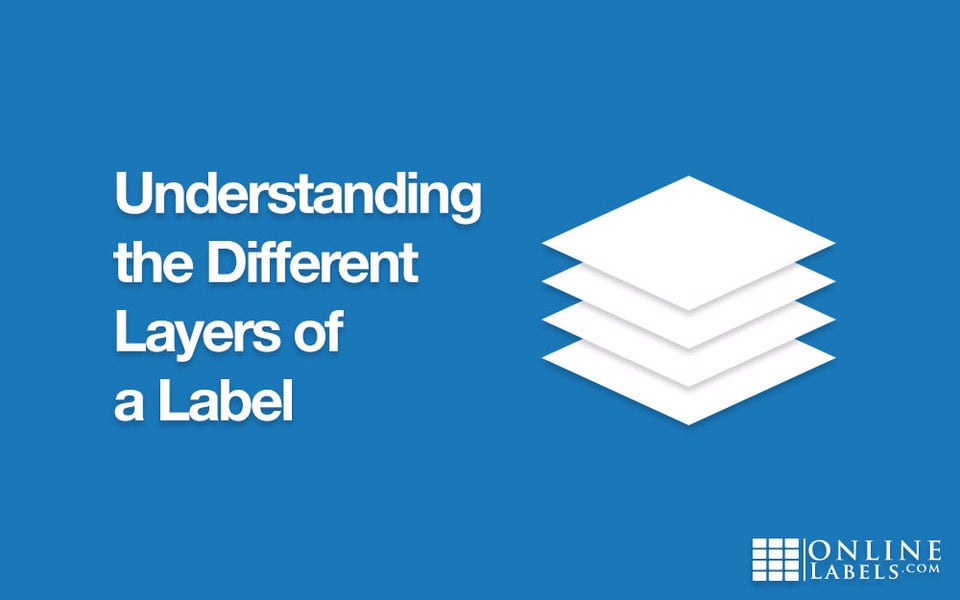Understanding the Different Layers of a Label

During the manufacturing of a label, many different layers are applied to each other to create the finished product. A label is typically produced with three different layers: a facestock, liner, and adhesive. Although they are technical terms, each layer is important and once defined, easy to understand.

What is a facestock?
The facestock is the top layer of a label. The facestock is what you can see and feel on your products, mailers, and containers. Keep a few things in mind when evaluating your needs for the proper facestock:
- What will it be applied to?
- Will temperature or moisture play a role?
- What environment will your label be in?
What is an adhesive?
The adhesive is the middle layer of your label. An adhesive forms a bond between your label and the surface it's being applied to. Simply put, it's the sticky part of your label. Adhesives are generally rated by tack, or its stickiness.
Labels can have a variety of adhesives for different applications. Most of the labels we offer are considered pressure sensitive. Look at the differences between a permanent and removable adhesive, both are made to stick, but have different levels of tack. Browse all of our adhesive labels.
Learn more about our adhesive label options.
What is a liner?
The liner is the bottom layer of your label. A liner, often seen as just a throw away item, actually plays an important role for labels. The liner enables the label to have a seamless feed through the printer. Without a quality liner, you may see printing issues such as jamming and curling.
Bonus Layer – Top Coat
Top coatings are added to special materials in instances where an extra layer of protection is needed. Consider our popular weatherproof materials, for example. A weatherproof material has the potential to come in contact with moist surfaces and unfriendly conditions, so a topcoat is applied to ensure the material is durable for a variety of uses.
Now that you understand the different parts of a label, browse our materials to find one that works for you. If you come across more terms you don't recognize along the way, visit our Label Terminology Glossary.
Our customer service team is also available to provide one-on-one support. Give us a call at 1-888-575-2235 to get started.


